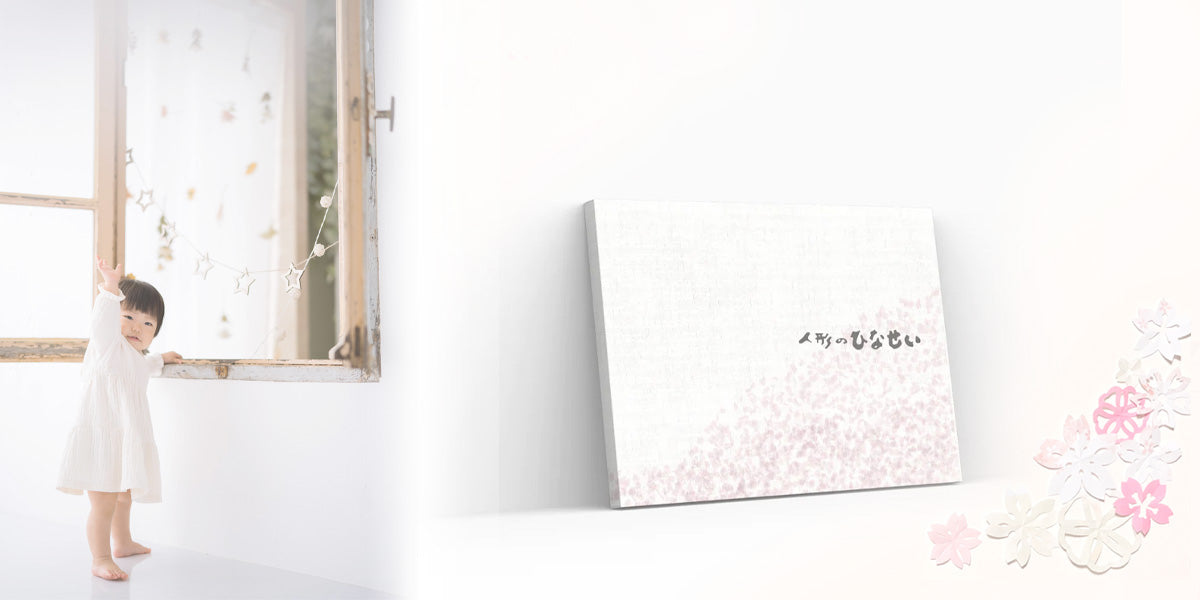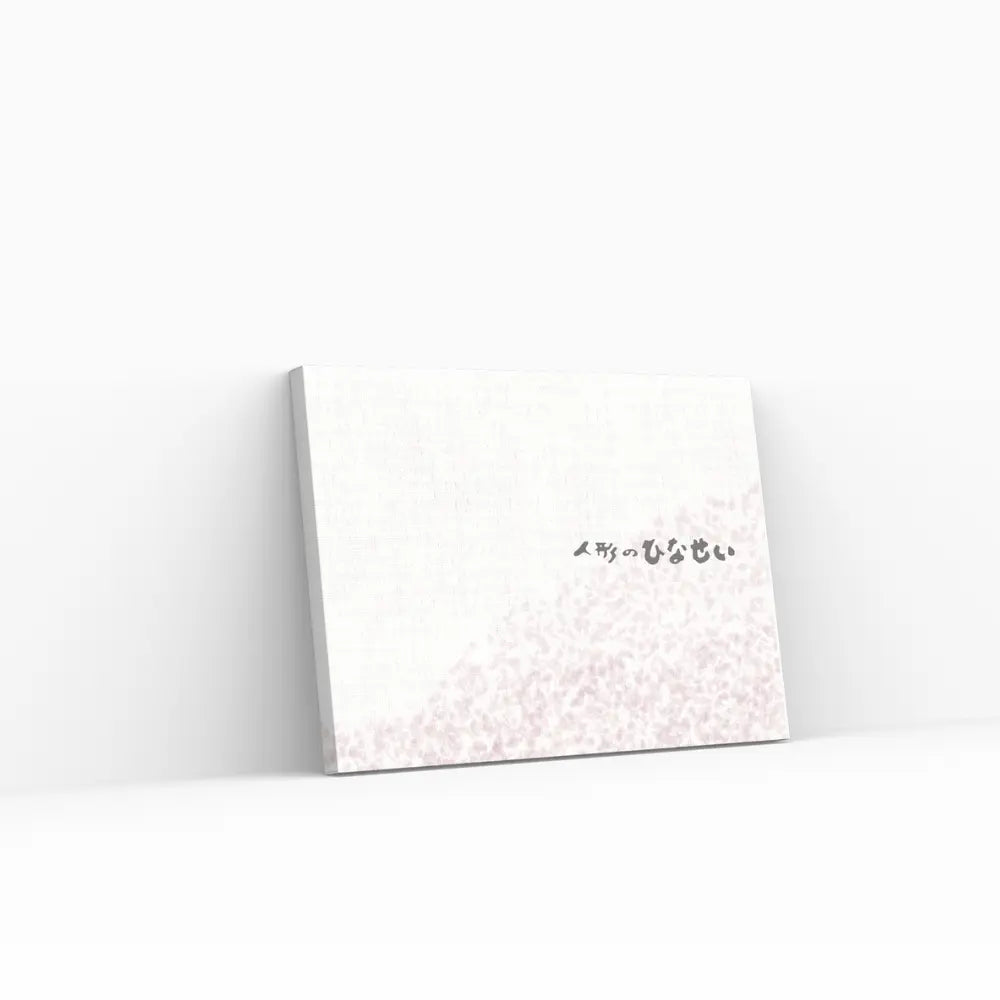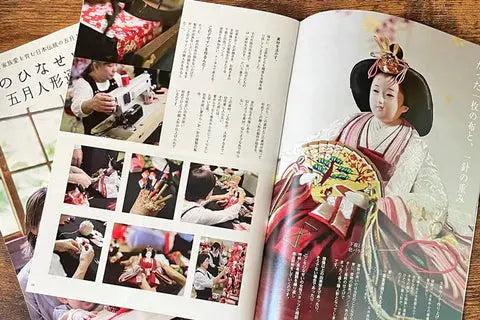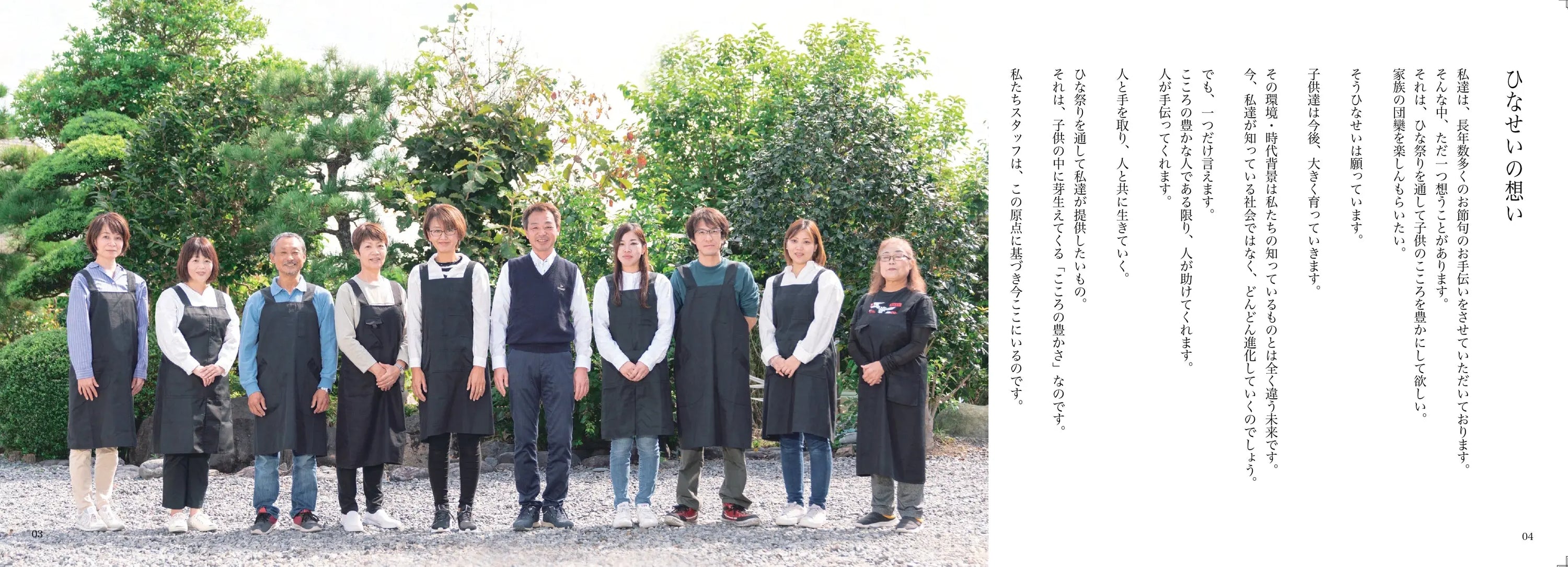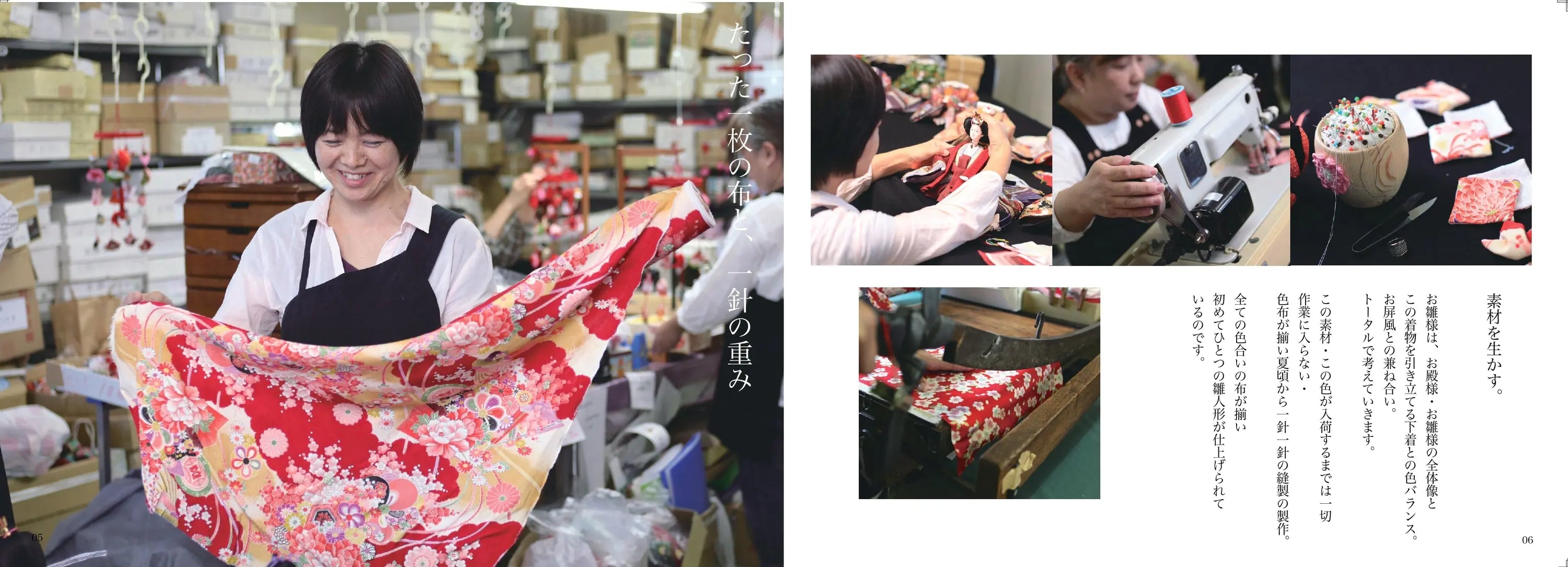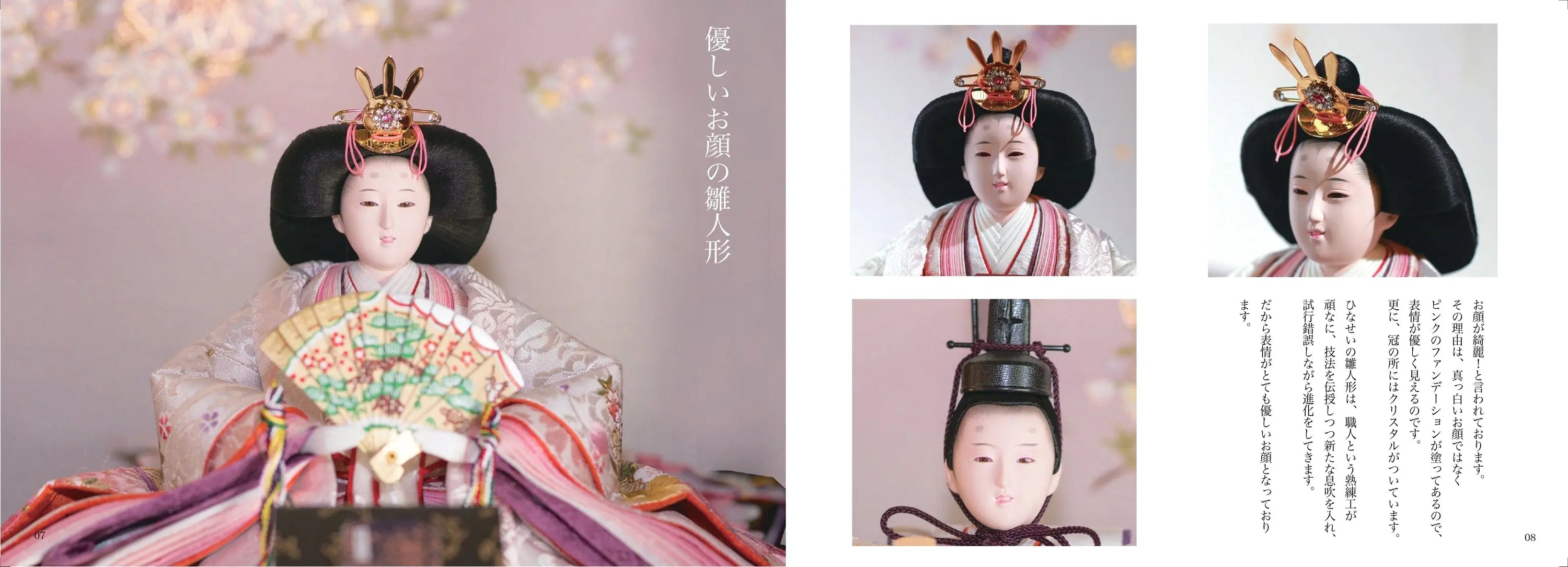How to display and arrange Hina dolls: placement, order of parts, left and right
This page explains how to arrange Hina dolls , the placement and order of the parts, and which is left and which is right.
The photographs illustrate the names of each part.
The order in which the decorations should be placed is also shown in photos and explained in text, making this a very easy-to-understand page on how to decorate.
Please take your time to look around, decorate appropriately, and enjoy this year's Hinamatsuri.

---- table of contents ----
Click below to jump

1. Complete manual on how to display Hina dolls | Correct placement and tips for Hina dolls
Tips on how to decorate and arrange Hina dolls
Decorating your Hina dolls beautifully and correctly is an important step to enjoying Hinamatsuri even more.
Especially for first-time visitors, it can be difficult to know how to arrange the dolls.
There are traditional rules for displaying Hina dolls, and knowing the correct placement will help you bring out the charm of the dolls to the fullest.
First, we start by preparing the stage.
The Hinadan has a number of tiers, and there are various styles, such as three-tiered and seven-tiered displays.
The dolls and props that are placed will vary depending on the number of tiers, so be sure to check carefully before decorating.
When decorating Hina dolls, it is important to pay attention to the placement and order of each doll.
Basically, the top tier is decorated with dolls representing the Emperor and Empress, and each tier is decorated with dolls representing roles such as the three court ladies and five musicians.
In addition, the entire stage is decorated with decorations such as cherry blossoms, tangerines, and peach blossoms, which further enhance the splendor of Hinamatsuri.
By decorating the dolls in the correct position, you can enjoy preparing for Hinamatsuri and teach children the importance of traditional Japanese culture .
2. The history and origin of Hina dolls | What does the Hina dolls tell us about the meaning of the Doll Festival?
The history and origin of Hina dolls and the Doll Festival
Hina dolls are not just decorations, but a traditional Japanese event with a deep history and meaning .
Hinamatsuri, also known as the "Peach Festival," has long been held as an event to pray for the healthy growth and happiness of girls.
Its origins date back to the Heian period, when it developed from the "Hina Asobi" (doll-playing) that was played among the nobility.
Eventually, the custom of "Nagashibina," in which the Hina dolls take on misfortunes in place of the gods, was added, and the current form of Hinamatsuri was established.
Hina dolls symbolize the Emperor and Empress, and are important as a symbol of wishes for the happiness of the family. In particular, the display of Dairibina dolls is a prayer for the well-being of the family and the future of girls.
Through Hina dolls, Japanese culture and values can be passed on to children even today, and it is an opportunity to reaffirm the importance of family time together .

3. Three-tiered Hina Doll Display | A guide to arranging Hina dolls beautifully
Correct arrangement of three-tiered Hina dolls
The three-tiered display is a style of Hina doll that is easy for beginners to display.
As a basic principle for displaying Hina dolls beautifully , it is important to know the correct way to arrange them.
In a three-tiered display, the Emperor and Empress dolls are placed on the top tier, three court ladies on the second tier, and five musicians on the third tier.
The Dairi Hina dolls represent the Emperor and Empress and are the central symbol of the Doll Festival.
The three ladies-in-waiting are responsible for assisting with wedding preparations, and the five musicians represent the musicians who liven up the banquet.
A tip for displaying a three-tiered display is to consider the balance of the doll placement .
The Emperor and Empress dolls are arranged symmetrically, and the three court ladies and five musicians are also arranged in the same way, maintaining a balance between the left and right sides.
In addition, by properly arranging decorative items and flowers, the entire Hina doll set will be in harmony.
The three-tiered display is simple yet is a style that fully expresses the charm of Hinamatsuri, and the whole family can enjoy decorating it.
4. The meaning of the seven-tiered Hina dolls and accessories | What is the correct way to decorate Hina dolls?
How to properly display a seven-tiered Hina doll display and its accessories
The seven-tiered display is one of the most extravagant styles of Hinamatsuri, with each tier displaying dolls and paraphernalia with different meanings and roles.
The seven-tiered display features dolls with different roles, including the Emperor and Empress dolls, three court ladies, five musicians, the Minister of the Right and the Minister of the Left, attendants and servants.
Various tools are also arranged on each tier, including dressing tables and chests, which reflect the lifestyles of the nobility from long ago.
In order to properly display Hina dolls, it is important to understand the meaning of the dolls and accessories on each tier and to arrange them appropriately.
By arranging the dolls from the top row onwards and then the accessories underneath, you can achieve a balanced look.
In addition, seven-tiered decorations are luxurious and beautiful, so the whole family can enjoy decorating them together.
The splendor of the seven-tiered display symbolizes the strong desire for the growth and happiness of girls, who are the main characters of Hinamatsuri.

5. Differences between Kanto and Kansai Hina Dolls | A guide to displaying Hina dolls by region
Differences in how Hina dolls are displayed in Kanto and Kansai
Japan has a variety of traditions and cultures, and the way Hina dolls are displayed varies from region to region.
There are clear differences between the way Hina dolls are displayed in Kanto and Kansai , and the reasons for this are related to historical and cultural differences.
In the Kanto region, the dolls are arranged with the Emperor on the left and the Empress on the right.
This is based on the position of the modern Emperor and can be said to be an arrangement that incorporates a modern sensibility.
On the other hand, in the Kansai region , the Emperor is placed on the right and the Empress on the left , respecting the ancient traditions.
This reflects the arrangement at the Imperial Court during the Heian period.
As you can see, there are differences in the way Hina dolls are arranged in Kanto and Kansai, but both places cherish local traditions and are imbued with the desire for family happiness .
By learning about regional differences, you can deepen your understanding of Hinamatsuri and enjoy it with the whole family. Also, by coming up with creative ways to display the Hina dolls, you can pass on traditions while respecting the culture of each region.
6. Arrangement of the Emperor and Empress dolls | The meaning of the emperor and empress symbolized by the dolls and how to display them
The symbolic meaning and arrangement of the Dairi-bina and Ohina dolls
Dairibina is the doll that plays the most important role among the Hina dolls displayed during the Girls' Festival.
The Dairi Hina dolls symbolize the Emperor and Empress, and are meant to be the center of the family.
Usually, the Dairi Hina dolls are placed on the top tier of the doll stand and are a symbol of celebrating the Girls' Festival . By displaying the Dairi Hina dolls correctly, it expresses strong feelings of hope for the well-being of the family and the healthy growth of girls.
The key point when arranging the Emperor and Empress dolls is to arrange them symmetrically and in a balanced manner.
The common arrangement in the Kanto region is to place the male doll representing the Emperor on the left and the female doll representing the Empress on the right.
On the other hand, in the Kansai region, this is reversed, with the male dolls on the right and the female dolls on the left.
It is interesting to note that the placement of the statues differs depending on the traditions of each region .
The Emperor and Empress dolls are the centerpiece of the Ohina dolls, and represent wishes for the happiness and health of the family. By arranging them correctly, you can pass on traditional Japanese culture to children through the Doll Festival.


7. Arrangement of the Three Court Ladies | Explanation of the roles of the ladies who support the Hina dolls and how to decorate them
The roles and placement of the three court ladies and the Hina dolls
The three court ladies play an important role among the Hina dolls as maids who support the Hina dolls.
They represent the women preparing for the wedding and are symbols of family unity and support during Hinamatsuri . The three court ladies are usually placed on the second tier of the doll stand, supporting the Emperor and Empress dolls.
There are also rules for the placement of the three court ladies.
On the left side, a standing court lady is placed, and in the center, a seated court lady is placed.
Another standing court lady is placed on the right.
The props each lady-in-waiting holds also have meaning: the lady-in-waiting on the left holds a sake vessel, the lady-in-waiting in the middle holds a stand, and the lady-in-waiting on the right holds a long-handled sake cup. These props are essential items for a wedding, and they depict the three ladies-in-waiting making wedding preparations.
By arranging them correctly, you can express the roles of the three court ladies and their deeper meaning during Hinamatsuri.
8. The roles and arrangement of the five musicians | What is the significance of the musicians who decorate the Hina dolls?
The roles and placement of the five musicians and the Hinamatsuri musicians
The five musicians symbolize the musicians who liven up the Hinamatsuri feast.
They are lined up around the Emperor and Empress dolls and the three court ladies, enhancing the splendor of the Hinamatsuri festival.
Each of the five musicians plays a different instrument, each with a special meaning.
They play instruments such as flutes, drums, and shamisen, and play a role in adding excitement to the wedding ceremony.
The five musicians are arranged on the third tier, but when arranging them, it is important to be careful to arrange them symmetrically.
From left to right, there are musicians with flutes, drums, and shamisen, and the musical performance brings harmony to the entire stage.
The five musicians symbolize the wedding of the Hina dolls and express the excitement and joy of the Hinamatsuri festival.
This arrangement will help you convey the meaning of Hinamatsuri to your children and also allow the whole family to share in the joy of the festival.
9. The Roles of the Minister of the Right and the Minister of the Left | Explanation of the Positioning and Meaning of the Chamberlains Who Protect the Hina Dolls
The placement and meaning of the Minister of the Right and the Minister of the Left and the guardians of the Hina dolls
The Minister of the Right and the Minister of the Left are placed on the stage as chamberlains whose role it is to protect the Imperial and Imperial Hina dolls.
The Minister of the Right is usually the senior chamberlain, carrying a bow or sword, and is placed on the right side of the stage.
On the other hand, the Minister of the Left is depicted as a young chamberlain and is placed on the left side.
These chamberlains are extremely important in Hinamatsuri as they symbolize the protection of the Imperial family and their families.
By decorating the Right and Left Ministers correctly, the meaning of praying for the safety and prosperity of the family is emphasized.
They are also symbols of strength and protection, as they are armed and ready for battle.
The Minister of the Right symbolizes the wisdom of old age, while the Minister of the Left represents youth and courage. By placing these two near the Emperor and Empress dolls, a strong message is conveyed that they will protect the peace of the family and the growth of children.
By arranging them correctly, you can convey the importance of family unity and protection through Hinamatsuri.

A five-person Hina doll display with a three-tiered storage compartment [Sayaka Hina]
10. Correct arrangement of Hina dolls | A thorough explanation of the meaning of the tools displayed with the Hina dolls
The correct way to display Hina dolls and accessories together
Hina doll decorations include an important element called Hina doll accessories .
These items reflect the lifestyle of the nobility of the past, and are required to be arranged correctly during the Doll Festival.
There are many different types of Hina dolls accessories, such as dressing tables, chests of drawers, and long chests, and each has a deep meaning.
The dressing table symbolizes beauty, while the chest of drawers symbolizes family prosperity and happiness.
Nagatochi is a tool for safely storing property and treasures, and is filled with wishes for future prosperity.
By displaying these items together with the Hina dolls, you can pray for the health and good fortune of your family.
The Hina dolls are also arranged in tiers, and the height and placement of the tiers also have meaning.
By arranging the tools, you can pass on traditional Japanese lifestyles to the next generation and deepen family bonds.
11. How to decorate with peach blossoms and cherry blossoms | The meaning of spring flowers that will enhance your Hina dolls and how to arrange them correctly
How to decorate peach blossoms, cherry blossoms, and Hina dolls
The peach blossoms and cherry blossoms displayed during Hinamatsuri symbolize the arrival of spring and the rebirth of life .
Peach blossoms are especially essential for Hinamatsuri, as they are believed to have the power to ward off evil spirits.
Peach blossoms, when displayed together with the Hina dolls, express wishes for the healthy growth of girls and the happiness of the family. Peach blossoms are usually placed symmetrically on the left and right sides of the Hinadan.
On the other hand, cherry blossoms are also displayed as a symbol of spring, highlighting their beauty and vitality .
Peach and cherry blossoms are not just decorations, but symbols of life that have existed since ancient times, and they evoke the changing scenery of Japan's four seasons. By decorating them correctly, you can celebrate the arrival of spring through Hinamatsuri and pray for the health and prosperity of your family.
During the Girls' Festival, let's understand the symbolism of these flowers and decorate them with care.
12. Summary | A complete guide to decorating Hina dolls and enjoying the Girls' Festival
How to decorate Hina dolls and enjoy the Girls' Festival
By understanding how to decorate Hina dolls correctly, you can enjoy the Doll's Festival even more.
This traditional event is an important one that prays for the healthy growth of girls and the happiness of their families.
From the Emperor and Empress dolls to the three court ladies, five musicians, and the Minister of the Right and the Minister of the Left, each doll has a special meaning.
In addition, by properly arranging the Hina dolls, peach blossoms, and cherry blossoms,
It can express the culture and beauty of Japan.
Decorating the Hina dolls is not just a decoration,
It's a wonderful opportunity to teach the importance of spending time together as a family and to pass on traditional Japanese culture to the next generation.
Through Hinamatsuri, we can deepen family bonds,
This will allow children to experience the beautiful culture of Japan.




